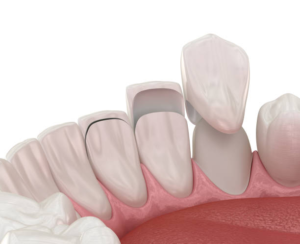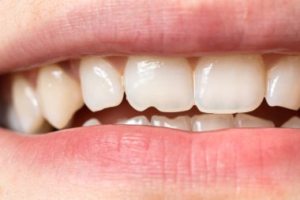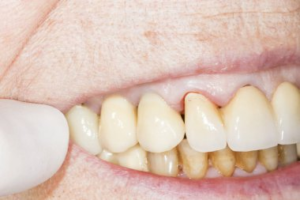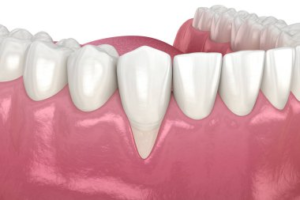Think veneers are invincible? The truth lies in how you care for them. Let’s explore what determines whether they stand the test of time—or fall short.
Factors Influencing Veneer Durability After a Decade
While veneers are built to last, several important factors influence their longevity. Understanding these can help patients maximize the lifespan of their veneers after 10 years.
Material Quality
Choosing high-quality materials can save time and money in the long run. Porcelain veneers are renowned for their resistance to staining and general wear, making them an excellent long-term option. On the other hand, composite veneers are less costly but may require repairs or replacements sooner due to their susceptibility to chipping and discoloration.
Dental Hygiene
Consistent oral care is critical for maintaining veneers. Poor dental hygiene can lead to plaque buildup, gum disease, and tooth decay, compromising the veneers and the underlying teeth. Neglected oral health may also cause the veneers to loosen or detach prematurely. Regular brushing, flossing, and professional cleanings ensure a healthy environment for your veneers to thrive.Following a consistent routine becomes even more critical for veneer maintenance after 10 years, helping prevent deterioration and ensuring long-term aesthetics.
Lifestyle Habits
Daily habits significantly impact veneer durability. Bruxism (teeth grinding) can exert excessive pressure on veneers, leading to cracks or chips. Similarly, biting on hard objects like ice, pens, or fingernails can weaken veneers over time. Individuals prone to these habits should consider wearing a night guard or making conscious behavioral changes to protect their veneers.
Dietary Choices
The foods and beverages you consume also play a role in veneer longevity. Excessive intake of acidic foods, such as citrus fruits or soft drinks, can erode the edges of the veneers, while hard foods like nuts or candies may cause physical damage. Even though porcelain veneers resist staining, beverages like coffee, tea, and wine can still affect their appearance if consumed excessively without proper oral care.
Dr. Jahnavi Patel, an eminent dental surgeon in south Bopal advises:
“Caring for veneers goes beyond brushing and flossing. Patients should use non-abrasive toothpaste and avoid over-the-counter whitening products, as they can damage veneers over time. Avoid using teeth as tools or chewing on hard items, and incorporate regular dental visits to monitor your veneers’ condition.”
Is your smile showing signs of wear? Here’s how to recognize when to start fresh with new veneers.
Signs It’s Time to Replace Your Veneers
Even with proper care, veneers after 10 years may show signs of natural deterioration. Recognizing the signs early can help you avoid complications and maintain your smile’s health and aesthetics.Knowing when to replace your veneers is a vital part of veneer maintenance after 10 years, helping you maintain optimal oral health and appearance.
Chips or Cracks
Visible chips or cracks in veneers can affect their structural integrity and appearance. Beyond aesthetics, damaged veneers may expose the underlying tooth, increasing the risk of decay or sensitivity.
Discoloration
While porcelain veneers are resistant to staining, their surface may lose its natural sheen over time, making them appear dull or uneven. Composite veneers are more prone to discoloration, especially with frequent exposure to coffee, tea, or wine.
Loose Fit
A loose veneer can create gaps where bacteria and food particles accumulate, increasing the likelihood of decay or gum issues. Also, loose veneers can cause discomfort or shift during chewing, impacting functionality.
Gum Recession
As gums recede, the edges of the veneers may become exposed, affecting the seamless appearance of your smile. This exposure can also make veneers more vulnerable to damage and may necessitate replacement to restore functionality and aesthetics.
Dr. Jahnavi Patel, a highly-skilled orthodontist, emphasizes:
“Replacing damaged veneers is crucial and not just for aesthetic reasons. Compromised veneers can lead to oral discomfort, increased tooth sensitivity, and potential damage to the underlying teeth if left unaddressed.”
Conclusion
When properly cared for, veneers after 10 years can still provide confident, radiant smiles. Regular dental visits and attentive maintenance ensure they look and function optimally.
“With advancements in dental technology, replacing or maintaining veneers has become more seamless than ever, ensuring your smile remains timeless. Patients should view veneers as an investment in their confidence and oral health. Even after 10 years, veneers can maintain their charm with timely care and proactive measures.”
Are you noticing wear on your veneers?a dental specialist to address concerns and maintain your radiant smile.
Frequently Asked Questions:
Are veneers prone to staining over time?
Porcelain veneers resist stains well, but the edges near natural teeth might discolor due to lifestyle habits like smoking or consuming dark beverages.
Is it painful to replace veneers after 10 years?
The replacement process is generally comfortable, as modern techniques ensure minimal discomfort. Dentists focus on preserving the underlying tooth structure.
Are there alternatives to veneers if I choose not to replace them?
Depending on the condition of your teeth, alternatives like crowns or bonding may be suitable. Consult your dentist for tailored advice.
How long are veneers supposed to last?
Veneers typically last 10–15 years with proper care, though porcelain veneers often outlast composite ones due to their durability.
Can my veneers be whitened if they become discolored?
No, veneers cannot be whitened. Instead, professional polishing or replacement can help restore their original color.
Are there any special products I should use to clean veneers?
To avoid scratching veneers, use non-abrasive toothpaste and a soft-bristled toothbrush. Your dentist may recommend specific products for maintenance.
How much does it typically cost to replace veneers after ten years?
The cost varies depending on the material and location but typically ranges between ₹15,000 and ₹30,000 per veneer in Ahemdabad.
Disclaimer: The information shared in this content is for educational purposes only and not for promotional use.













